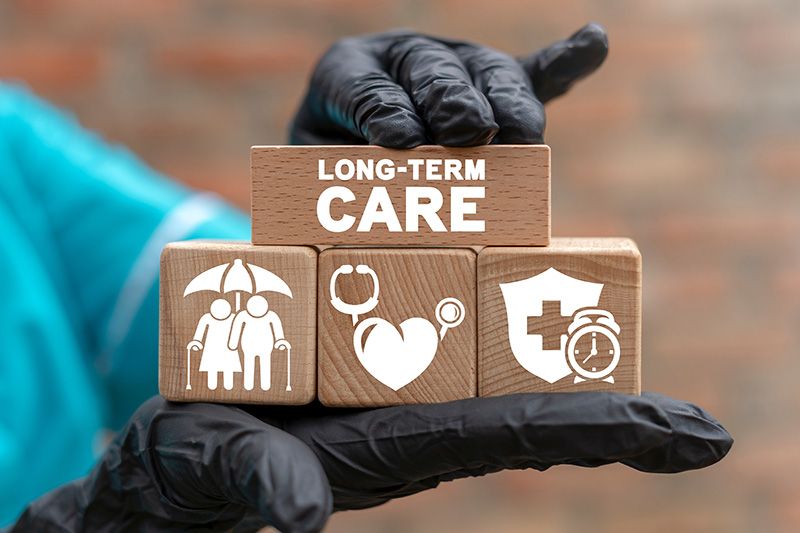Protecting the Rights of Long-Term Care Residents
“Nursing homes must have a plan to support residents’ right to vote,” according to an Oct. 5 memo from the Centers for Medicare and Medicaid Patients. But advocates of older adults and people with disabilities are worried those rights are not always met, especially in the wake of the pandemic.
The right to vote is only one in a long list of long-term care residents’ rights, including the right to health care and the right to quality of life.
With the highest COVID 19 fatality rates of any group, and the toxic effects of prolonged isolation due to pandemic quarantines, older adults, people with disabilities, and their advocates are working with the Office of the Long-Term Care Ombudsman to make sure those rights are met.

At an Ethnic Media Services briefing, co-sponsored by California Dept. of Aging & CDPH Vaccinate All 58, Nov. 16, experts – Blanca Castro, State Long-Term Care Ombudsman; Jerry Kirouac, Coordinator, PSA 2, Area 2 Agency on Aging/Long Term Care Ombudsman; Hagar Dickman, Staff Attorney, California Justice in Aging; and Dr. Anna Chodos, Associate Professor of Medicine, General Internal Medicine, Zuckerberg San Francisco General, UCSF and Geriatrics, Medicine, UCSF – along with two long term care residents, story tellers, focus on the issue of residents rights.
It’s a topic of growing concern for advocates of older adults and people with disabilities, residents of long-term care facilities in California, in the wake of the pandemic, during which residents suffered not only high infection and fatality rates, but prolonged quarantines and isolation.
Blanca Castro gave an overview of long-term care facilities in California, speaking about concerns as the state ombudsman of long-term care about the issue of rights.
“The role of the long-term care ombudsman is to basically ensure that if somebody is not being given the level of care, and being treated with respect and dignity, when they are in a long-term care facility, that we will communicate with the resident – we are here specifically for the resident.
“We are not an enforcement agency. There are over 700 long-term care ombudsmen across California; 35 programs statewide; and we’re funded entirely by state paid taxpayer funding that is through the Older Americans Act and through the Older Californians Act and general fund.
“Every individual that is in a facility has rights that must be protected and must be honored, for example, if you are being forced to eat at a certain time; or you’re not being given a bath when you want it; or when you press a call button because you need assistance going to the restroom and you’re not having somebody come and help you in a timely manner; or they ignore you, it’s been hours; those are your rights.
“Advocates are long-term care ombudsmen. Last year, in 2021, we had almost 40,000 complaints. They could be inappropriate discharges; medications not being given; not having visitors.
“In a nutshell, we’re your voice, we’re there to work with staff. We’re also there to work directly with the enforcement agencies such as the Department of Public Health, the Department of Social Services, Department of Justice.
“Our goal is that the dignity, respect, independence is always first and foremost and if the individual is unable to communicate directly to us, they may be unable to communicate verbally, they might have a power of attorney, or a representative, we will work with their family.
“If an individual refuses and does not give their consent for us to investigate or for us to raise a problem, we honor that. We are there for the resident. Unless it is a very egregious physical abuse or somebody is in danger, then we will bring in law enforcement, but we always ensure that the resident has given us consent and that we are providing them with the level of support that they’re asking us to provide them.
“As human beings, we’re social animals. We need touch, we need voices, we need contact, and unfortunately because of the pandemic, facilities essentially locked down, so residents became prisoners.
“They were not allowed to go out and they were not allowed to have any visitors come in. It didn’t have to be that way. What we learned from the pandemic is that every long-term care facility must have an infection control plan in place. Every individual that works there; that visits there; there are protocols to ensure that if there is an infection, how are you to mitigate; how do you prevent it from spreading and some of those things were not being done such as, washing your hands in between caring from one resident to another; making sure you’re not using the same towel for one resident to another; ensuring you’re wearing a mask if you might feel like you have a cough, or not going in at all.
“Now there are very specific recommendation requirements for all facilities that they must maintain and that’s what the regulatory agencies are checking on but what we did learn is that the isolation, not only did it harm, the fact that people were unable to see their loved ones, it actually made their conditions worse,” said Castro.


